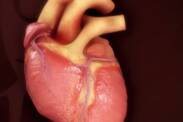Congenital heart disorders
Congenital heart disorders include

Atrial and ventricular septal defect
A defect in the atrial and ventricular septum is a heart defect and a disease of the atrial or ventricular septum that causes communication between the right and left hearts so that oxygenated and deoxygenated blood mix. It is a congenital heart defect, whereby mixed oxygenated and deoxygenated blood is distributed throughout the body, which can cause major problems. Very often such defects appear in childhood, but it also depends on the size of the defect, sometimes they appear in adulthood.

Congenital Cardiac Defects
Congenital heart defects arise even during intrauterine development. The defective development affects the heart and blood vessels. It manifests itself immediately after birth, but in some cases later in childhood or in adulthood.

Fallot tetralogy
Fallot tetralogy is congenital heart disease and the most common cyanotic heart defect. It is a disease of the heart and large vessels, and it occurs mainly in childhood, sometimes in adulthood, but then the patient is less burdened by the disease and may not manifest itself in any particular way. The disease is often accompanied by other cardiac and vascular defects, such as coronary artery defects or an opening in the septum between the atria directly in the heart.









